Making Comics: Breaking down a page of Star Wars: The High Republic issue one
See the process, from script to final art!
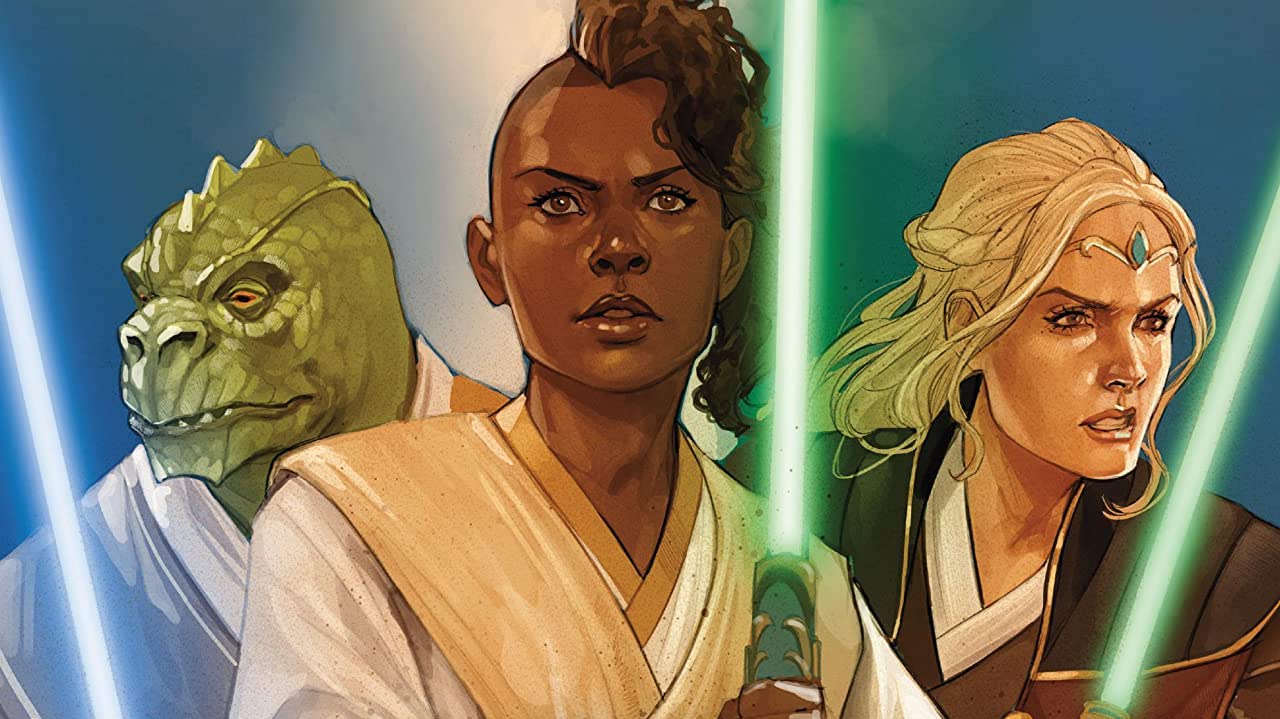
Last week was momentous for two reasons: Not only did my part of Phase 2 of Star Wars: The High Republic come to an end with issue 10 of the Marvel comic, I also started work on the first issue of Phase 3!1
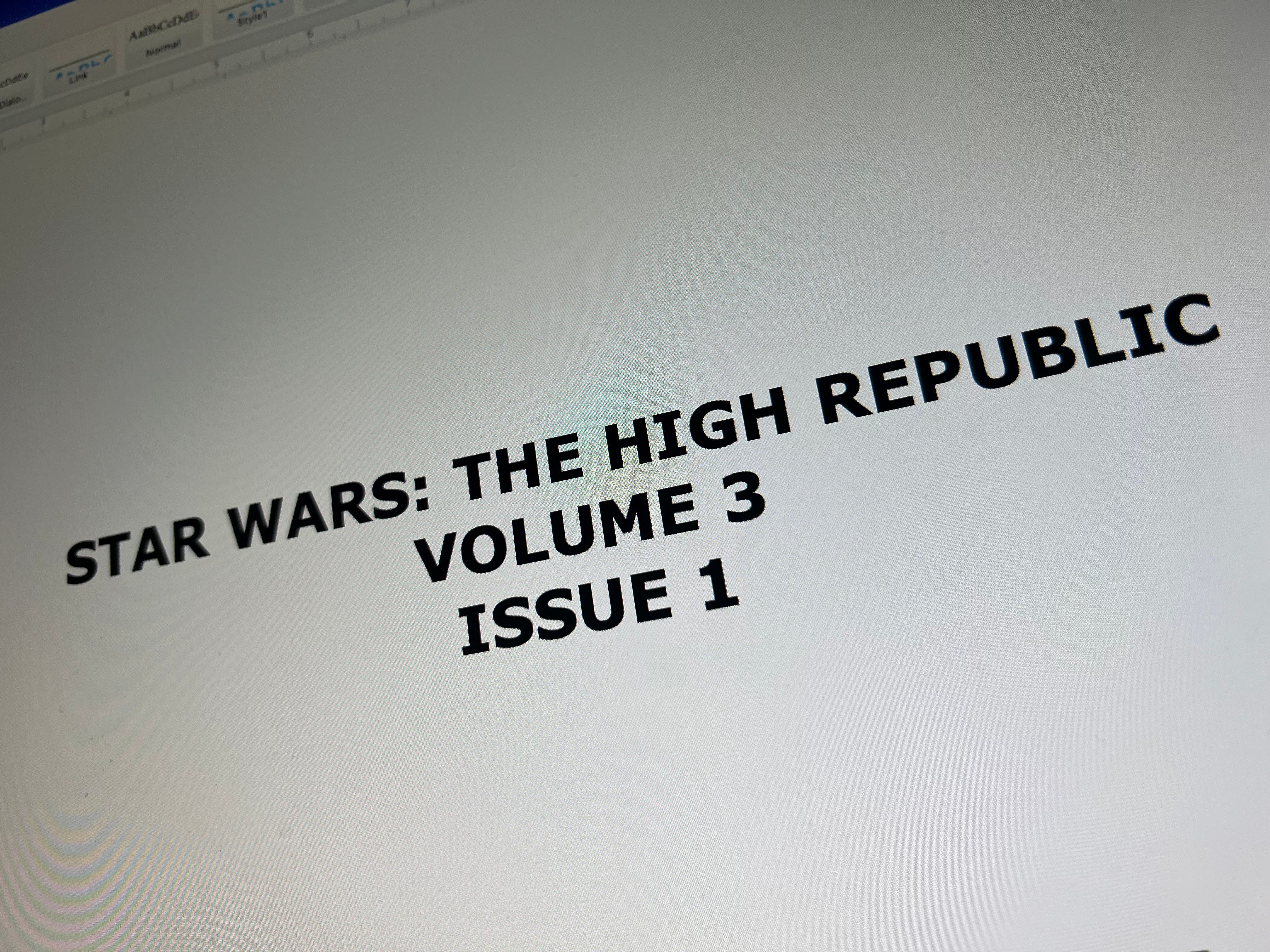
Having worked with series artist Ario Anindito for so long now, my scripts have changed quite a bit over time as we’ve developed a shorthand between us, but I thought this was a good opportunity to delve into the archive and revisit how a page of the very first High Republic comic was put together back in 2020!
As with any comic book, everything starts with the script which, in the case of this particular issue, was sent back and forth between me, editors Mark Paniccia and Tom Groneman at Marvel, and the various editors and Story Group members at Lucasfilm.
There are two main ways to write a comic. The first is a full script which breaks the page down into panels with a description of each. The other is usually called the Marvel Method, developed by Stan Lee in the 60s where Stan the Man would describe the general story beats, and the artist would then go away and draw the issue, pacing everything out themselves, Stan adding the dialogue when he saw the final art.
While I have written Marvel method before, most comics based on an established IP like this are written out in full, so licensors can check everything before any art is put to paper (or touchscreen!)2
Whatever the method, I always maintain that my scripts are only a blueprint not a complete roadmap. Ario will — and does — have better ideas on layouts along the way, so I try not to be too prescriptive. At the end of the day, my script is a letter to the artist, not the final reader, trying to explain what’s in my head!
Here’s a grab of a page from issue one, the third draft of the script3:
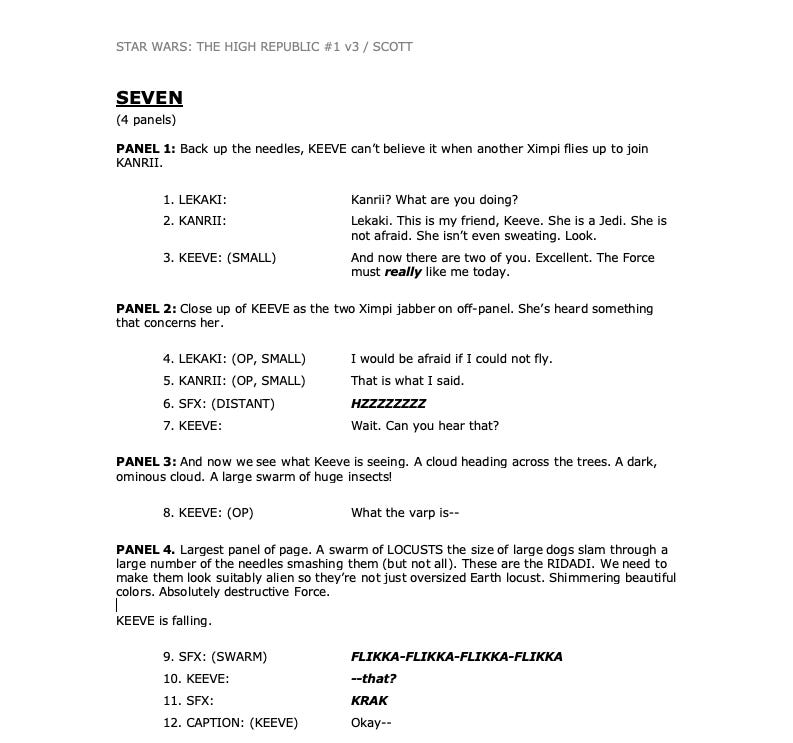
Once changes have been made and script amends locked off, that’s it for a comic writer, right? Our job must be done?
WRONG!
The script is only the beginning, both for the story and the writer’s part in the process of putting a comic together.
The first thing you receive are thumbnails of the issue, so you can see what the artist — in this case, my horror-loving brother-from-another-mother Ario — has in mind…
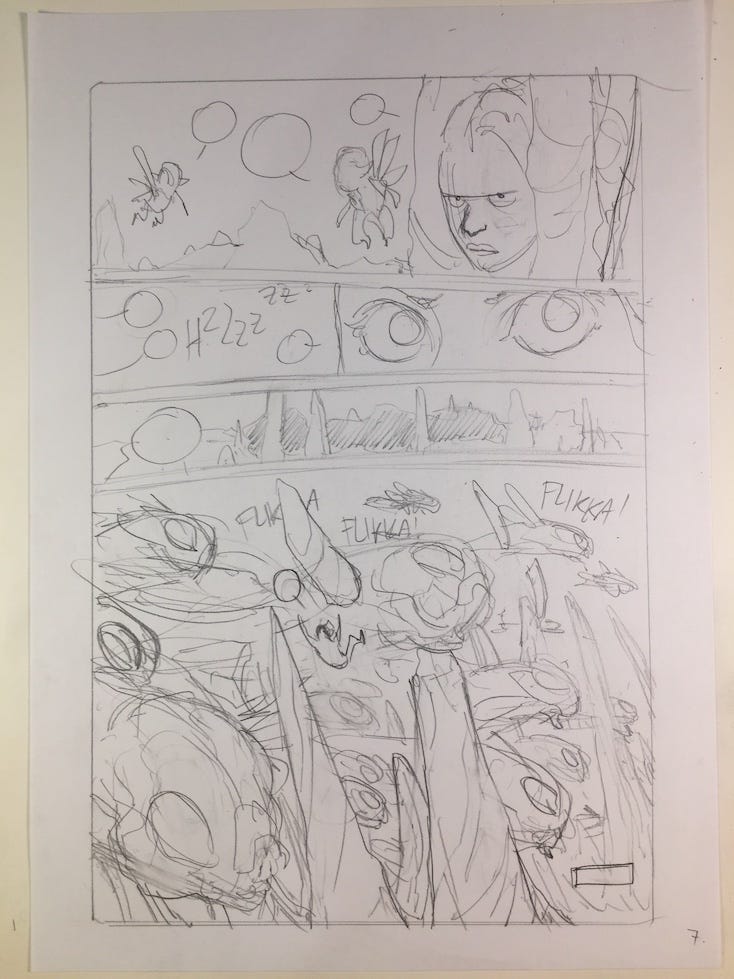
Again, there are a raft of notes; from me, from the editorial team and, of course, from Lucasfilm, but once we’ve all agreed on a way forward, Ario moves onto pencils4.
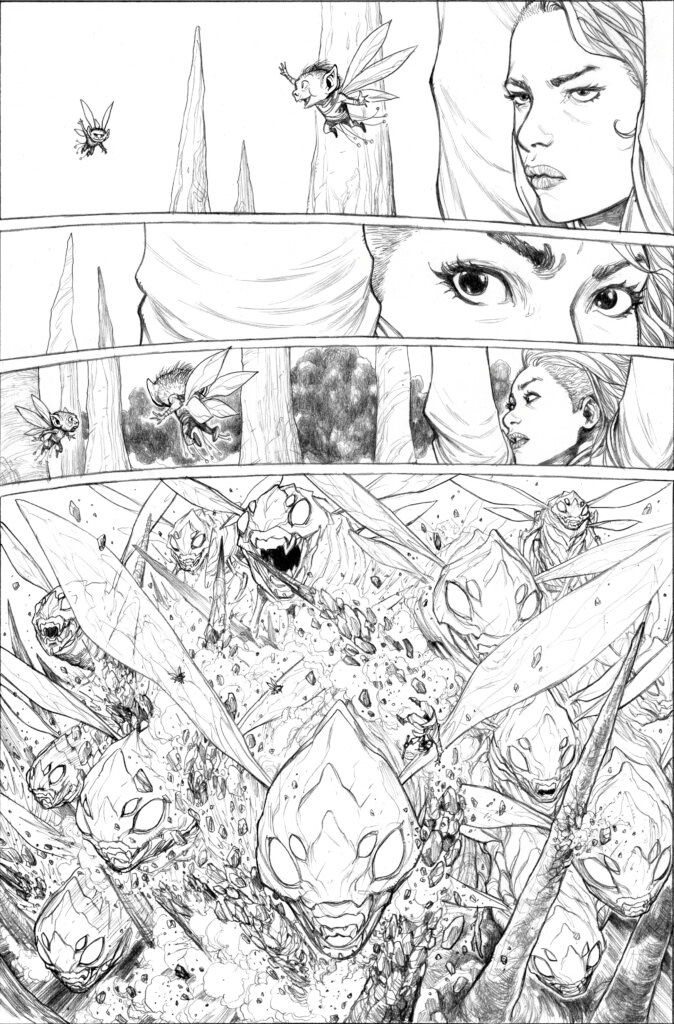
As you can see, Ario decided to change the angle of our monstrous star locust - the Ridadi - which really punched up the action.
We also received notes to take another pass at Jedi Keeve Trennis’ hair, which was tweaked in a patch that inker Mark Morales incorporated into the next stage…
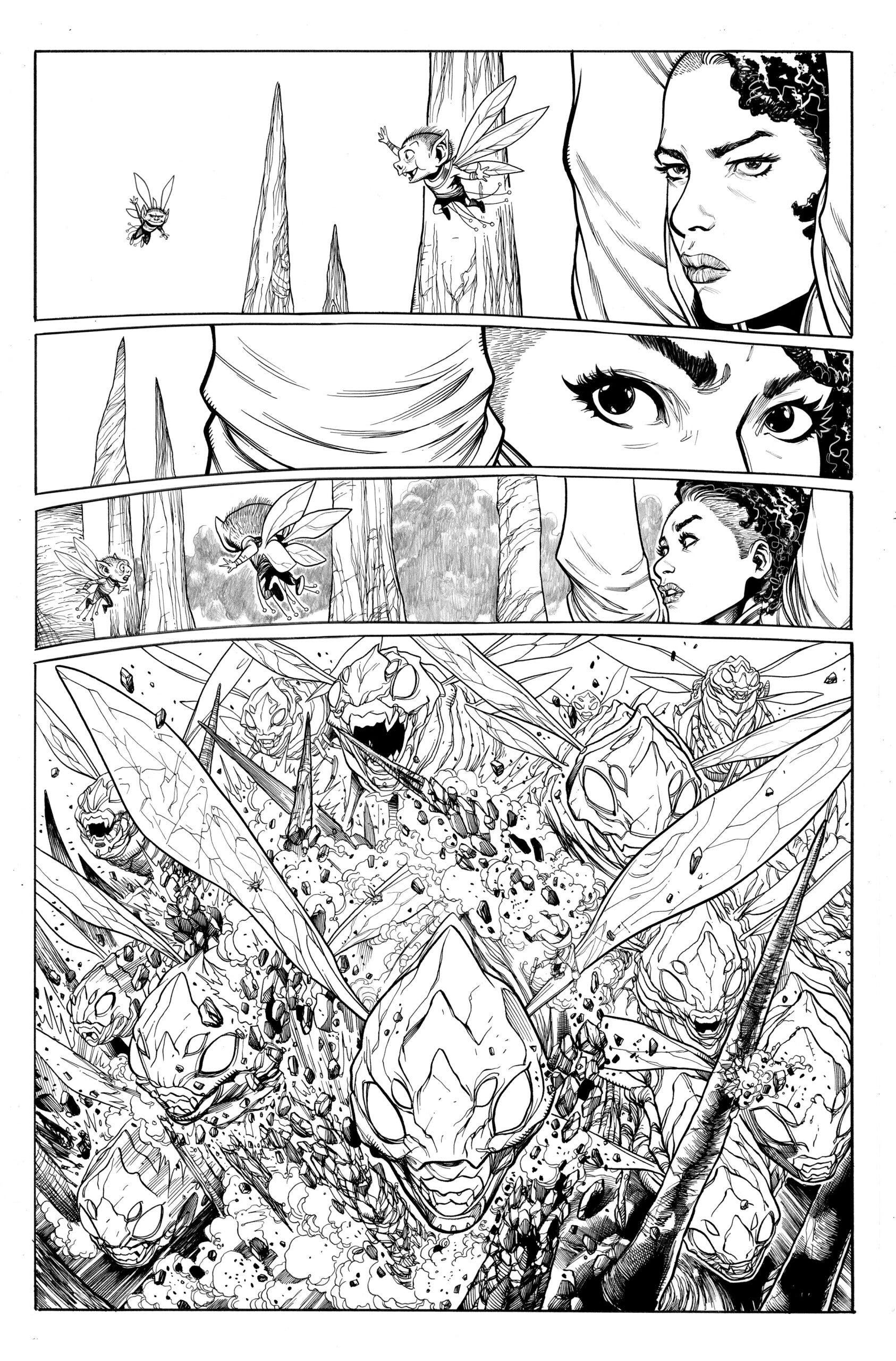
I love Keeve’s expression on that top panel.
We are so fortunate to have Mark on the team, his style of inking the perfect accompaniment to Ario’s pencils. And, even more amazing, Mark inks by hand using a brush.
Again, the inks are sent off for approval and, once the word is given, Mark’s art is delivered to the colourist to add another dimension. At this point, we were working with the incredible Annalisa Leoni. Just look at the results:
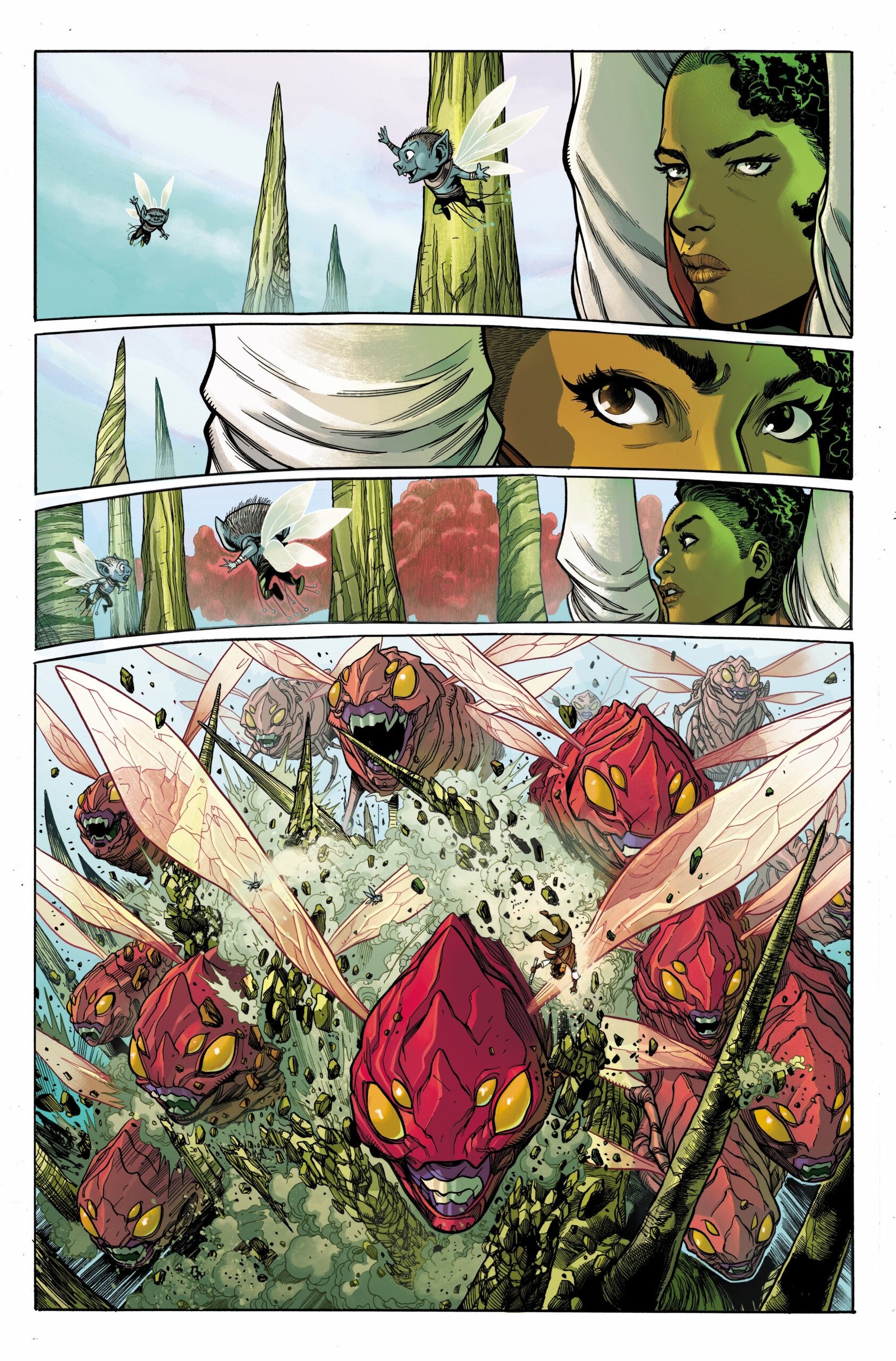
I still want a Ridadi action figure. (Not to mention a Keeve, a Sskeer, an Avar etc. etc.)
Again, notes fly back and forth, and while any final changes are discussed, I run through the script making sure the dialogue I wrote months before still matches the art. It’s another chance for me to tighten things up, or to change elements that may have come up in the writing of later scripts, like the changing of names, for example, or to drop in things that foreshadow future events.
Once done, the pages go off to our letterer — in the case of this issue, the awesome Ariana Mahar — who supplies the final layouts.
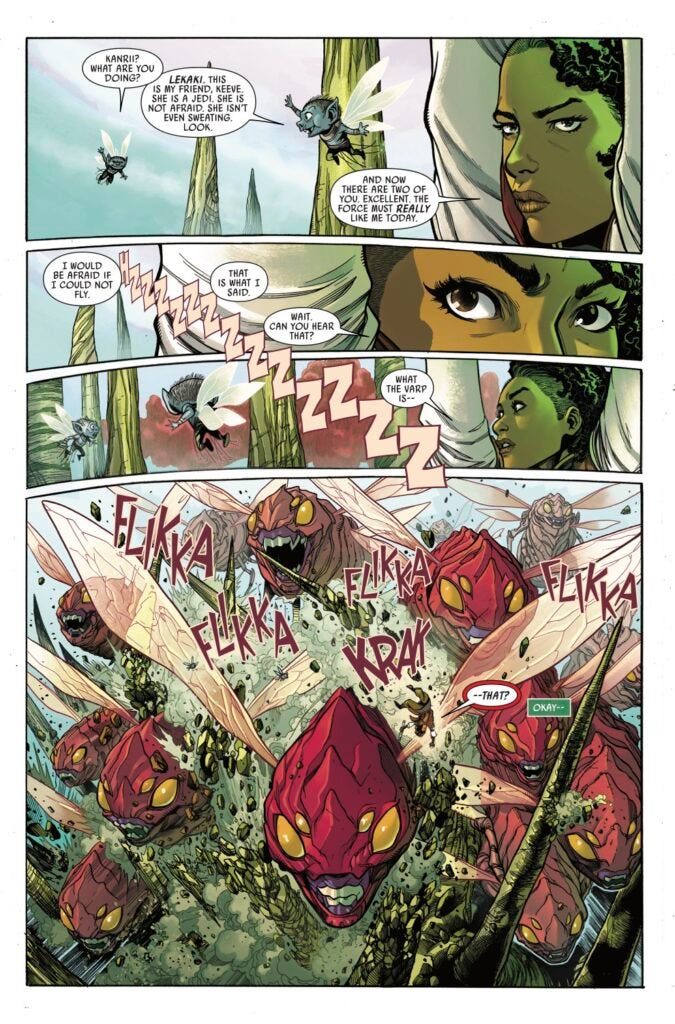
I say final, but even then there can be tweaks as new notes come in from Lucasfilm and we read through the entire issue with a fresh set of eyes.
When everyone is happy, the issue is sent off to print and the process starts all over again. In fact, by this point, the artist is usually well into drawing the next issue while I could be two or three scripts ahead of them, depending on the schedule.
Making comics… it’s the nearest you’ll ever come to spinning plates without becoming a circus act!
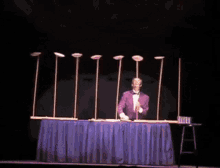
I hope you enjoyed this post! If so, I’d really appreciate you sharing it far and wide! The more we build this newsletter, the more time I can dedicate time to it! THANK YOU!
Out this December, blatant plug fans! ↩
Saying that, my scripts for High Republic are sometimes a bit of both, with fights in particular written using Marvel Method to allow the artist as much license when it comes to blocking out the action, especially with Ario as I’ve worked with him so far. ↩
According to the file, this version of the script was delivered on 30th July 2020. ↩
I was lucky enough to see some of Ario’s pencils in person at Star Wars Celebration this year and they are STUNNING. (The complete gentleman even gave me a page of my own, my favourite page of the first arc, no less! I wonder if anyone can guess which that is?) Post your answers in the comments! ↩

